Search Result
Results for "
Retinoids
" in MedChemExpress (MCE) Product Catalog:
7
Isotope-Labeled Compounds
| Cat. No. |
Product Name |
Target |
Research Areas |
Chemical Structure |
-
- HY-136554
-
|
|
Others
|
Cancer
|
|
WYC-210, a Tazarotene derivative, is a retinoid compound with lower anticancer activity . WYC-210 is a click chemistry reagent, it contains an Alkyne group and can undergo copper-catalyzed azide-alkyne cycloaddition (CuAAc) with molecules containing Azide groups.
|
-

-
- HY-107397
-
Ch55
2 Publications Verification
|
RAR/RXR
|
Cancer
|
|
Ch55 is a potent synthetic retinoid. Ch55 binds to RAR-α and RAR-β receptors with high affinity. Ch55 displays low affinity for cellular retinoic acid binding protein (CRABP). Ch55 is a potent inducer of the differentiation of HL60 cells with an EC50 of 200 nM. Ch55 can be used for cancer research .
|
-

-
- HY-D1190
-
|
|
RAR/RXR
|
Inflammation/Immunology
|
|
DC271 is a RAR agonist that can be considered a retinoid, eliciting cellular responses consistent with the endogenous retinoid ATRA and the synthetic retinoid EC23. DC271 binds to retinoid protein machinery, including CRABPII, to translocate the endogenous retinoid ATRA into the nucleus .
|
-
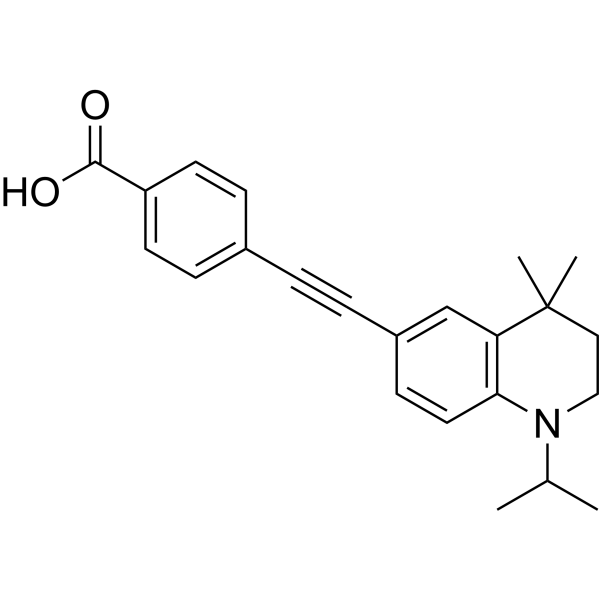
-
- HY-118584
-
-
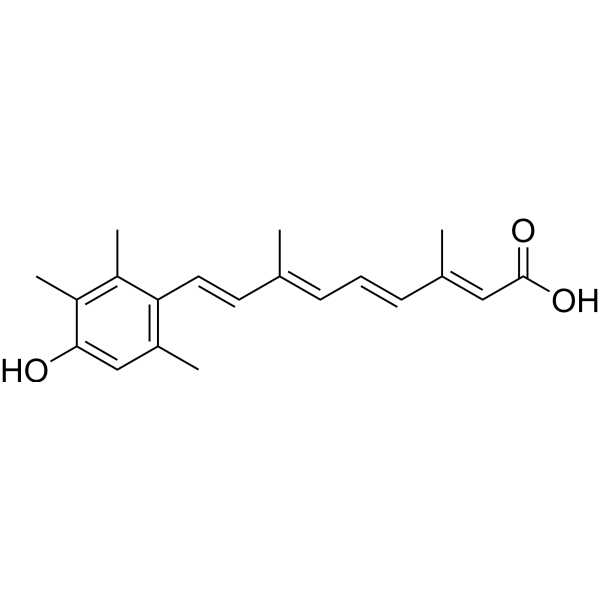
-
- HY-106735
-
|
Ro 13-6298; Arotinoid ethyl ester
|
RAR/RXR
|
Inflammation/Immunology
Cancer
|
|
Arotinoid (RO 13-6298) is a retinoid, and acts as an orally active and highly potent agonist of retinoic acid receptors (RARs) with antipsoriatic effects. Arotinoid has antipapiltoma activity with an ED50 of 0.05 mg/kg. Arotinoid can be used for the research of skin carcinomas .
|
-

-
- HY-15870
-
|
|
AP-1
|
Inflammation/Immunology
Cancer
|
|
SR 11302 is an activator protein-1 (AP-1) transcription factor inhibitor. SR 11302 is a retinoid that specifically inhibits AP-1 activity without activating the transcription of retinoic acid response element (RARE) .
|
-
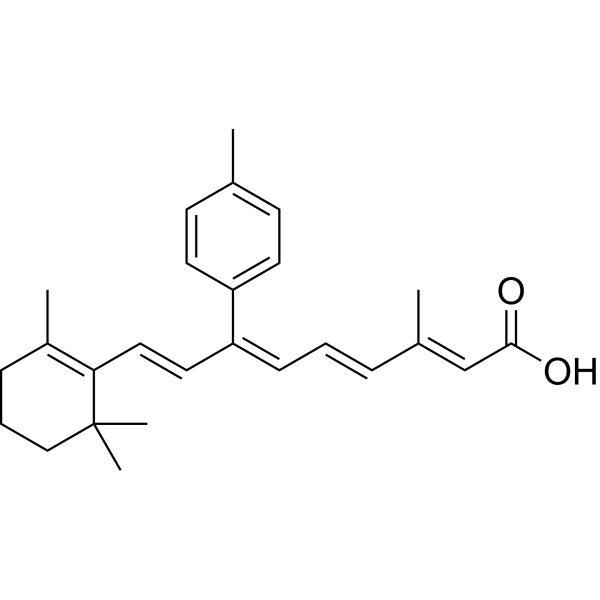
-
- HY-B0091
-
|
CD271
|
RAR/RXR
Autophagy
Apoptosis
|
Neurological Disease
Inflammation/Immunology
Cancer
|
|
Adapalene (CD271), a third-generation synthetic retinoid, is widely used for the research of acne. Adapalene is a potent RAR agonist, with AC50s of 2.3 nM, 9.3 nM, and 22 nM for RARβ, RARγ, RARα, respectively. Adapalene also inhibits the enzymatic activity of GOT1 in a non-competitive manner. Adapalene exhibits anti-tumor activity .
|
-
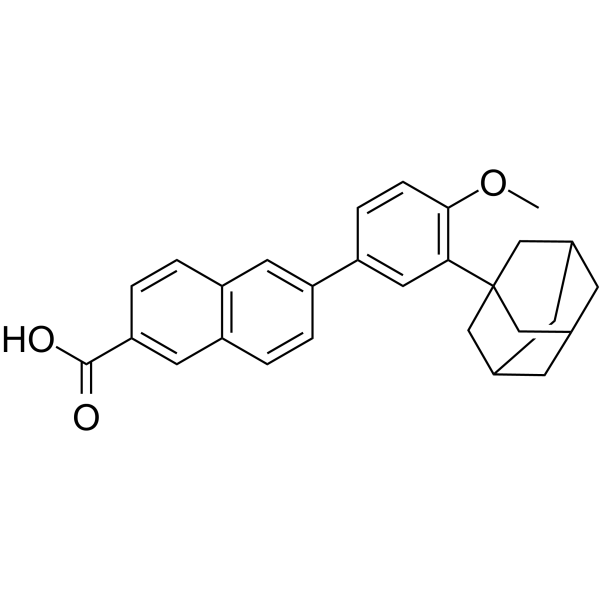
-
- HY-B0091A
-
|
CD 271 sodium salt
|
RAR/RXR
Autophagy
Apoptosis
|
Neurological Disease
Inflammation/Immunology
Cancer
|
|
Adapalene (CD271) sodium salt, a third-generation synthetic retinoid, is widely used for the research of acne. Adapalene sodium salt is a potent RAR agonist, with AC50s of 2.3 nM, 9.3 nM, and 22 nM for RARβ, RARγ, RARα, respectively. Adapalene sodium salt also inhibits the enzymatic activity of GOT1 in a non-competitive manner. Adapalene sodium salt exhibits anti-tumor activity .
|
-
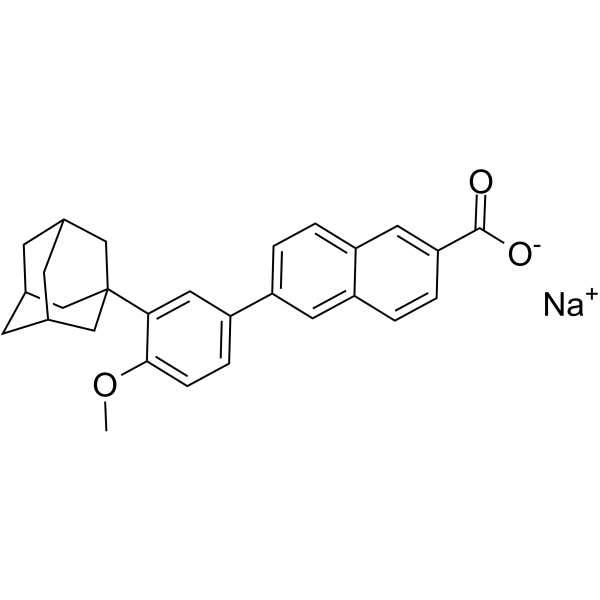
-
- HY-118239
-
-
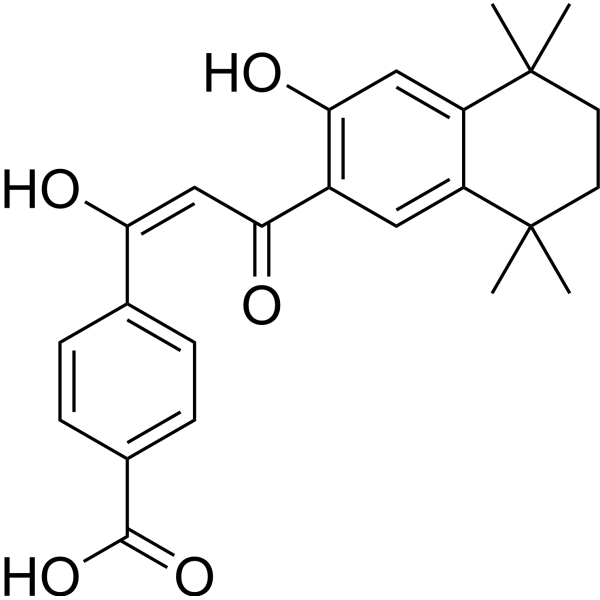
-
- HY-107399
-
-
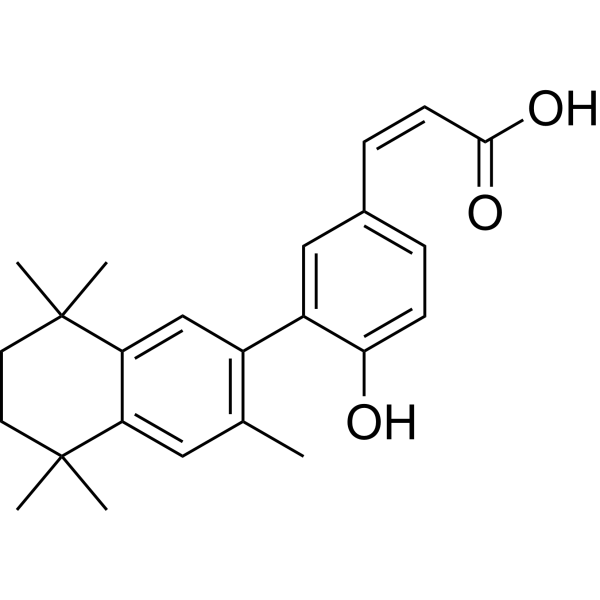
-
- HY-160212
-
-
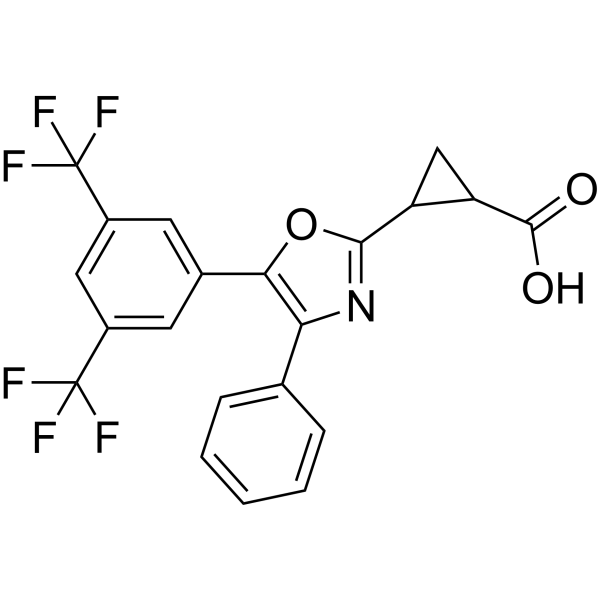
-
- HY-B0797
-
|
Ro 10-9359
|
Apoptosis
|
Others
|
|
Etretinate(Ro 10-9359) is a second-generation retinoid that has the potential for severe psoriasis treatment.
|
-
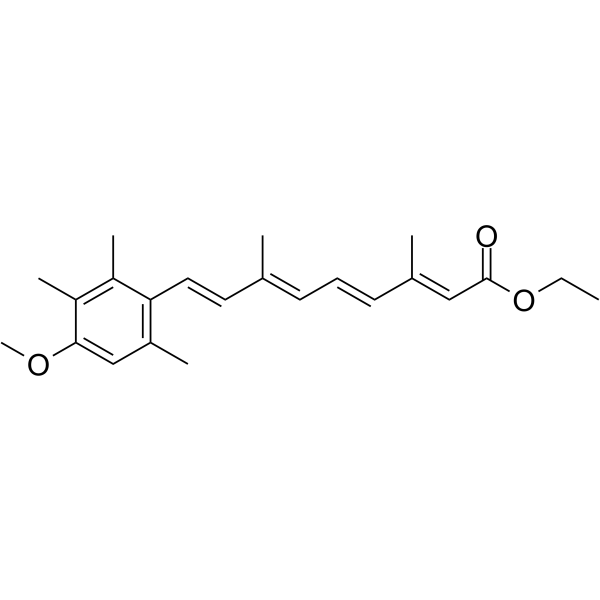
-
- HY-12309
-
|
AGN 190205; BASF-46928
|
Others
|
Neurological Disease
|
|
EC23 (AGN 190205) is a stable synthetic retinoid analogue and induces neuronal differentiation .
|
-
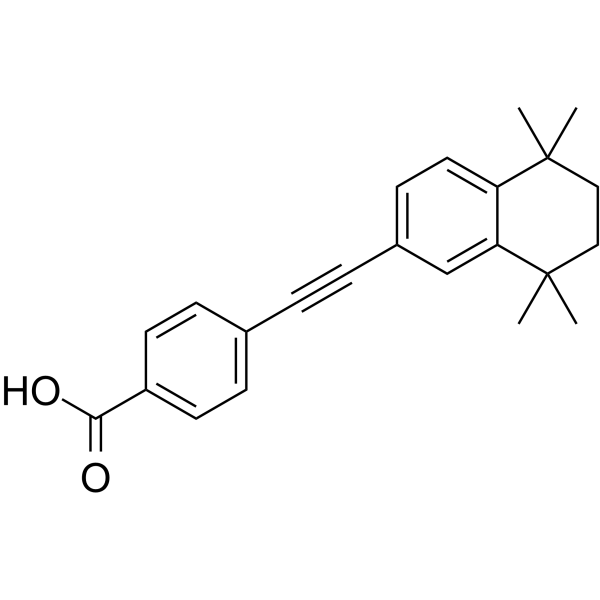
-
- HY-100008
-
|
NIK333
|
RAR/RXR
SphK
Autophagy
HCV
|
Infection
Cancer
|
|
Peretinoin is an oral acyclic retinoid with a vitamin A-like structure that targets retinoid nuclear receptors such as retinoid X receptor (RXR) and retinoic acid receptor (RAR). Peretinoin reduces the mRNA level of sphingosine kinase 1 (SPHK1) in vitro by downregulating a transcription factor, Sp1 . Peretinoin prevents the progression of non-alcoholic steatohepatitis (NASH) and the development of hepatocellular carcinoma (HCC) through activating the autophagy pathway by increased Atg16L1 expression . Peretinoin inhibits HCV RNA amplification and virus release by altering lipid metabolism with a EC50 of 9 μM .
|
-
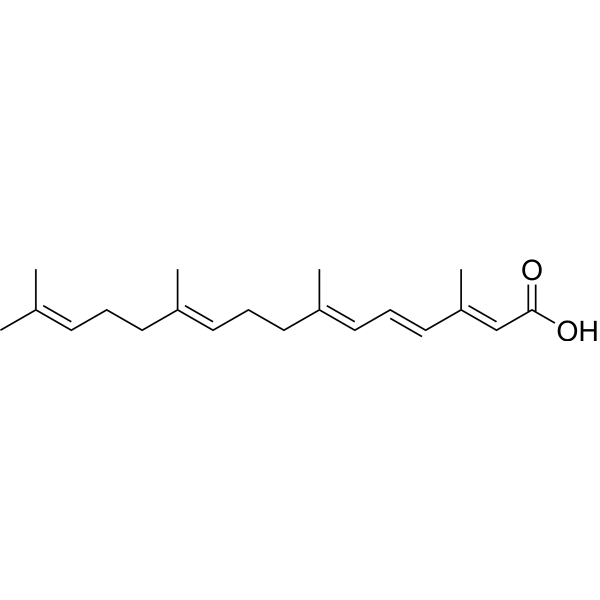
-
- HY-N2992
-
|
|
RAR/RXR
|
Cancer
|
|
16α-Hydroxytrametenolic acid, a natural triterpene, is a potential retinoid X receptor (RXR) selective agonist .
|
-
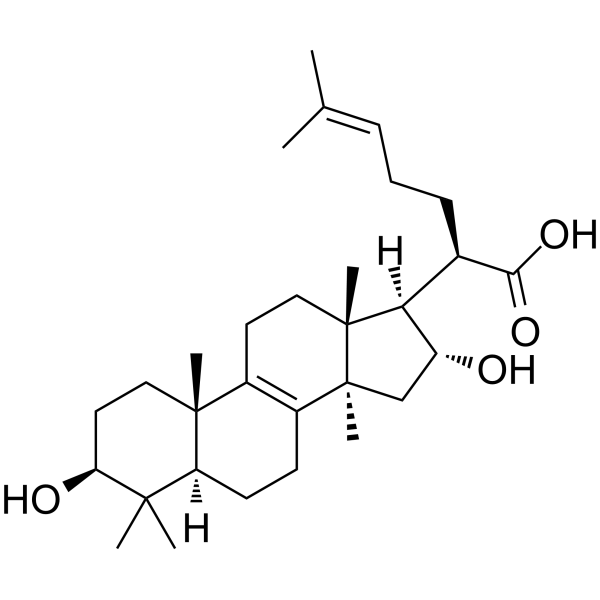
-
- HY-115879
-
-
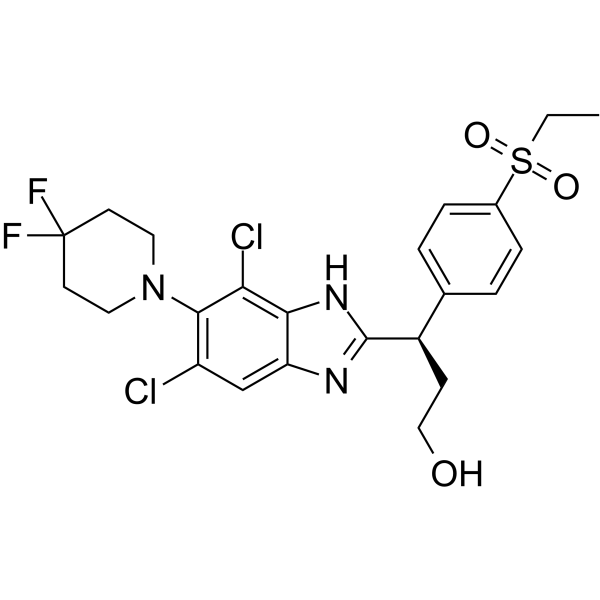
-
- HY-15373
-
|
4-HPR
|
RAR/RXR
Autophagy
|
Cancer
|
|
Fenretinide (4-HPR) is a synthetic retinoid deriverative, binding to the retinoic acid receptors (RAR) at concentrations necessary to induce cell death.
|
-
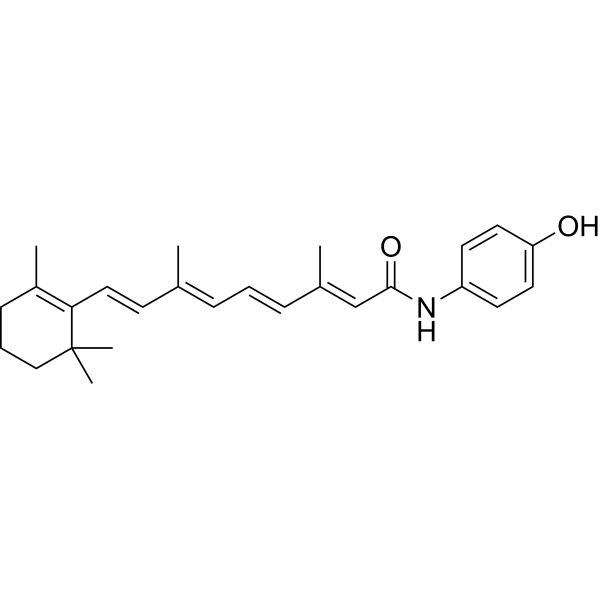
-
- HY-145590
-
|
|
ROR
|
Cancer
|
|
Retezorogant is a retinoid-related orphan receptor γ (RORγ) antagonist, extracted from patent WO2016093342 A1.
|
-
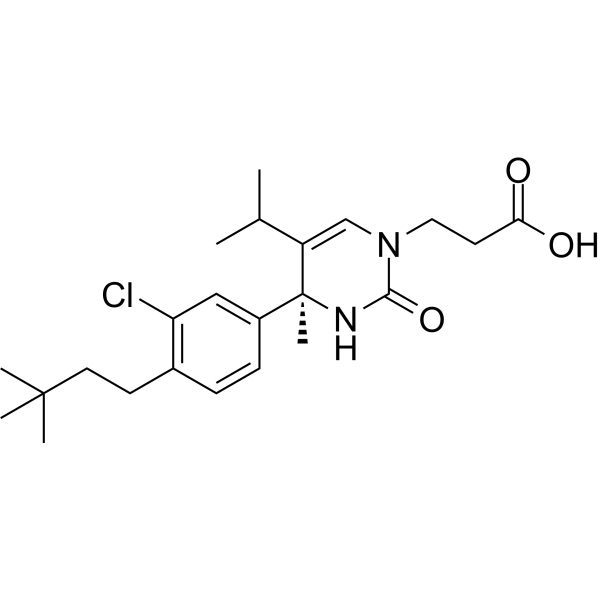
-
- HY-B0797S
-
|
|
Apoptosis
|
Others
|
|
Etretinate-d3 is the deuterium labeled Etretinate. Etretinate (Ro 10-9359) is a second-generation retinoid that has the potential for severe psoriasis research.
|
-
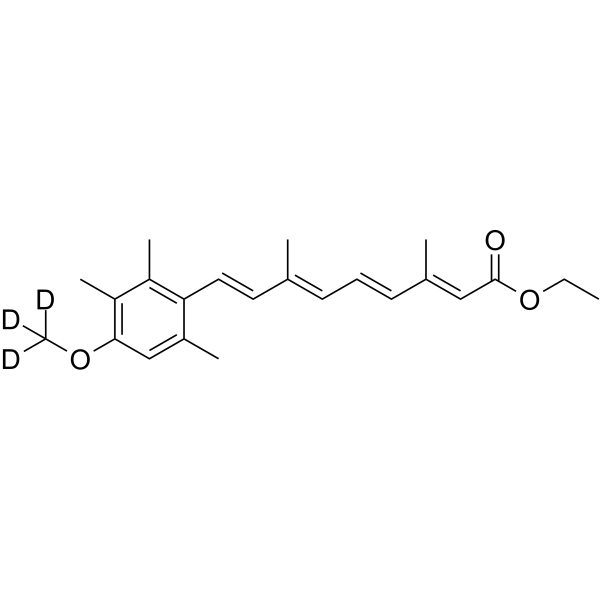
-
- HY-155437
-
|
|
RAR/RXR
|
Others
|
|
NEt-iFQ is a fluorescent retinoid X receptor (RXR) agonist with potent solvatochromic properties. NEt-iFQ selectively binds to RXR-LBP and fluoresces .
|
-
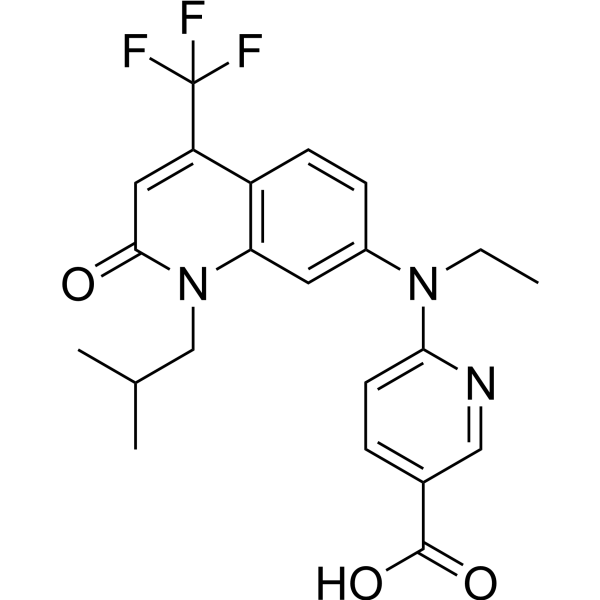
-
- HY-132810
-
|
BI 730357
|
ROR
|
Inflammation/Immunology
|
|
Bevurogant (BI 730357) is a retinoid-related orphan receptor-gamma t (RORγt) antagonist. Bevurogant can be used for the research of chronic inflammatory diseases .
|
-
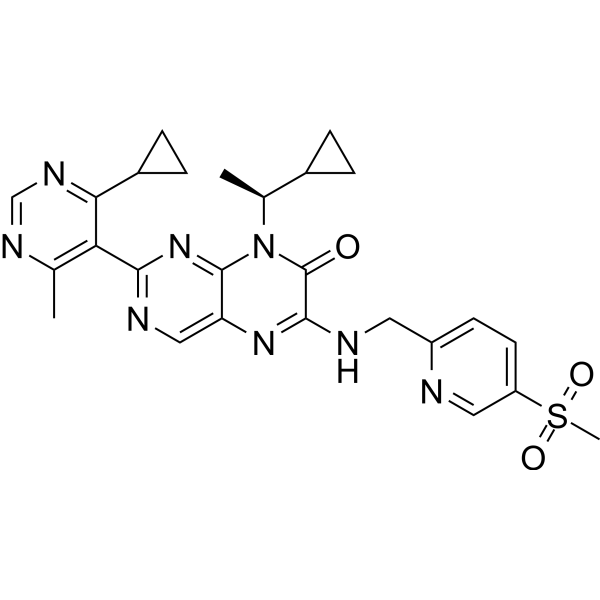
-
- HY-W009310
-
|
|
Endogenous Metabolite
Organoid
|
Others
|
|
9-cis-Retinal is a natural retinoid. Dietary 9-cis-β-carotene generates 9-cis-retinoids via cleavage into 9-cis-retinal. 9-cis Retinal binds to cellular retinol-binding protein-I (CRBP-I) and CRBP-II with Kds of 8 nM and 5 nM, respectively. 9-cis-Retinal expedites differentiation and maturation of rod photoreceptors in retinal organoids .
|
-
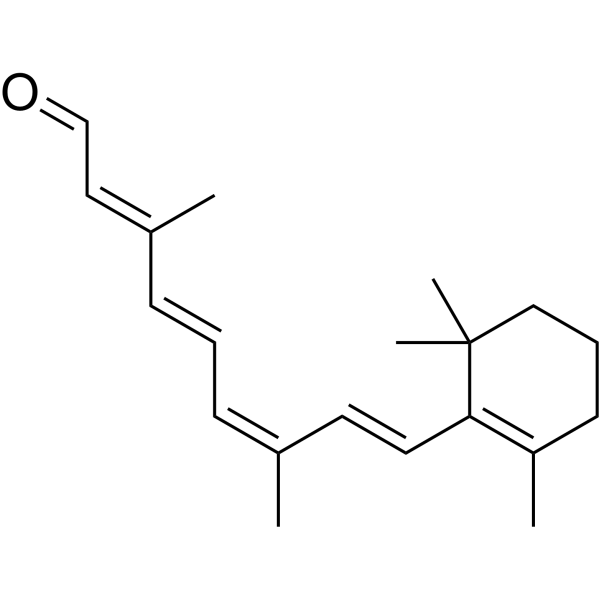
-
- HY-101108
-
|
AGN 190299
|
|
|
|
Tazarotenic acid is the metabolite of Tazarotene. Tazarotenic acid binding to retinoic acid receptors (RARs) is the probable molecular target of retinoid action. Tazarotenic acid has the potential for the research of warty dyskeratoma .
|
-

-
- HY-120875
-
|
|
RAR/RXR
|
Neurological Disease
|
|
HX600 is a synthetic agonist for RXR (Retinoid X Receptor) heterodimer complex. HX600 prevents ischemia-induced neuronal damage. HX600 has orally bioactivity .
|
-

-
- HY-B0107
-
-
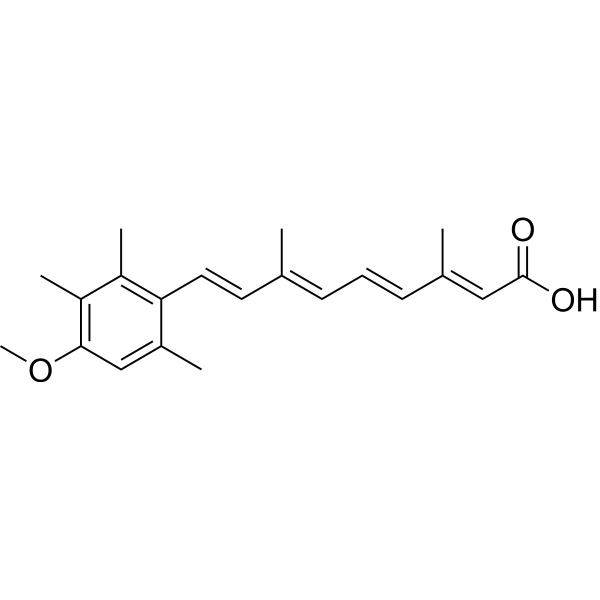
-
- HY-B0107A
-
|
Ro 10-1670 sodium
|
RAR/RXR
Autophagy
|
Inflammation/Immunology
Cancer
|
|
Acitretin (Ro 10-1670) sodium is a second-generation, systemic retinoid that has been used in the treatment of psoriasis. Acitretin sodium also can be used for the research of Alzheimer’s disease .
|
-
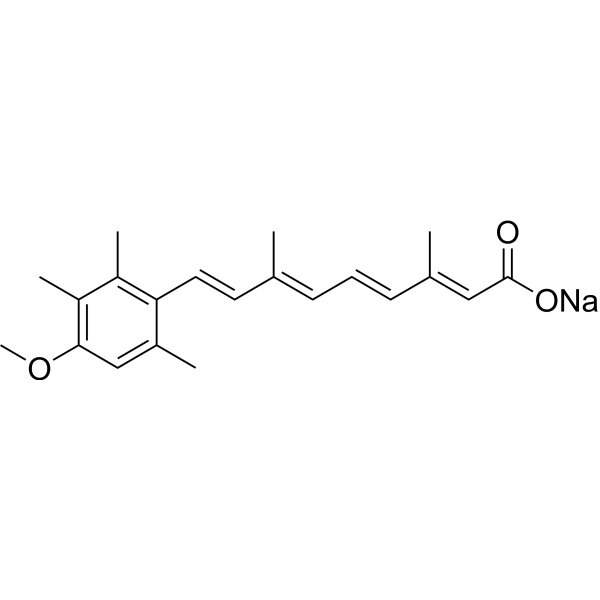
-
- HY-107500
-
|
|
RAR/RXR
Autophagy
|
Others
|
|
UVI 3003 is a highly selective antagonist of retinoid X receptor (RXR), and inhibits xenopus and human RXRα in Cos7 cells, with IC50s of 0.22 and 0.24 μM, respectively.
|
-
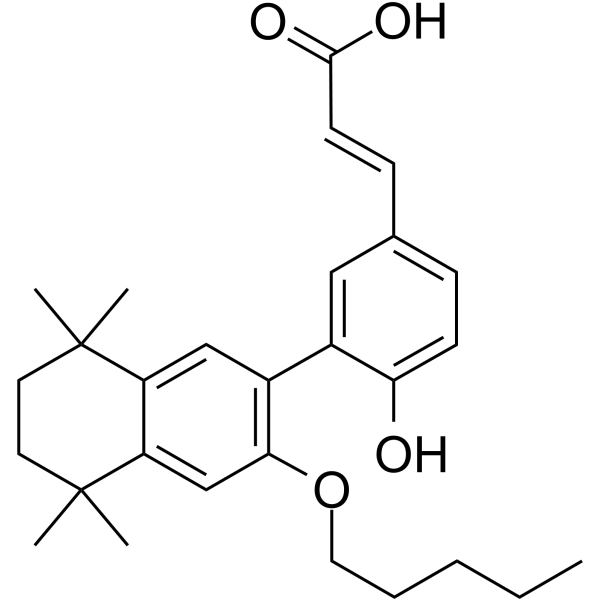
-
- HY-104070
-
|
|
RAR/RXR
Autophagy
|
Cancer
|
|
LG-100064 is a retinoid-X-receptor (RXR) agonist, with EC50s of 330 nM, 200 nM, and 260 nM for RXRα, RXRβ and RXRγ; LG-100064 can be used in the research of cancer.
|
-

-
- HY-108525
-
|
|
RAR/RXR
|
Cancer
|
|
Fluorobexarotene (compound 20) is a potent retinoid-X-receptor (RXR) agonist, with a Ki value of 12 nM and an EC50 value of 43 nM for RXRα receptor. Fluorobexarotene possesses an apparent RXR binding affinity that is 75% greater than Bexarotene .
|
-
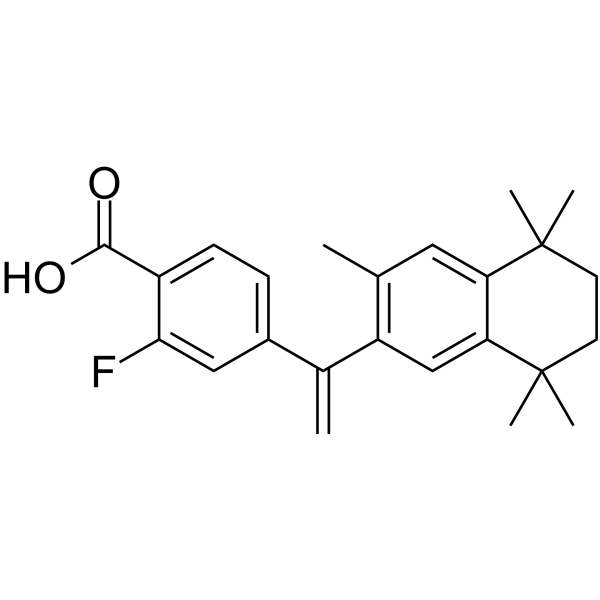
-
- HY-14171S
-
|
LGD1069 d4
|
RAR/RXR
Autophagy
|
Cancer
|
|
Bexarotene-d4 is a deuterium labeled Bexarotene (LGD1069). Bexarotene (LGD1069) is a selective retinoid X receptors (RXR) agonist for the treatment of cutaneous T-cell lymphoma[1][2][3][4][5].
|
-

-
- HY-116506
-
|
|
RAR/RXR
Reactive Oxygen Species
Apoptosis
Autophagy
|
Cancer
|
|
Bigelovin, a sesquiterpene lactone isolated from Inula hupehensis, is a selective retinoid X receptor α agonist. Bigelovin suppresses tumor growth through inducing apoptosis and autophagy via the inhibition of mTOR pathway regulated by ROS generation .
|
-
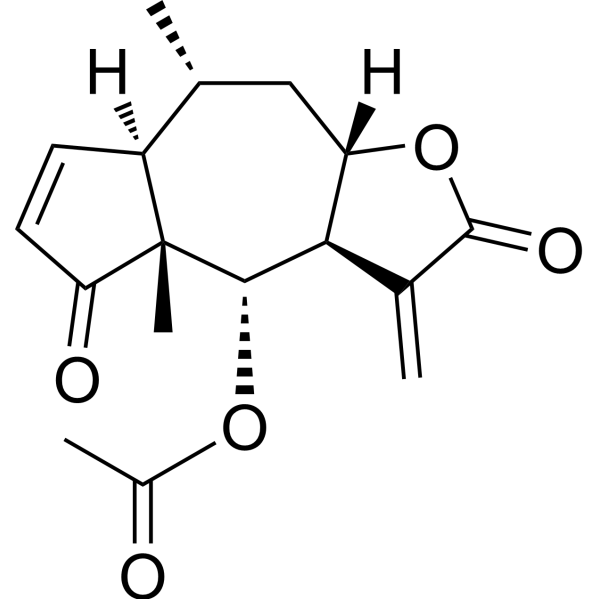
-
- HY-153832
-
|
|
RAR/RXR
NO Synthase
|
Cancer
|
|
MSU-42011 is an orally active retinoid X receptor (RXR) agonist. MSU-42011 inhibits the iNOS activity and reduces the expression of p-ERK protein. MSU-42011 has immunomodulatory and antitumor activity .
|
-
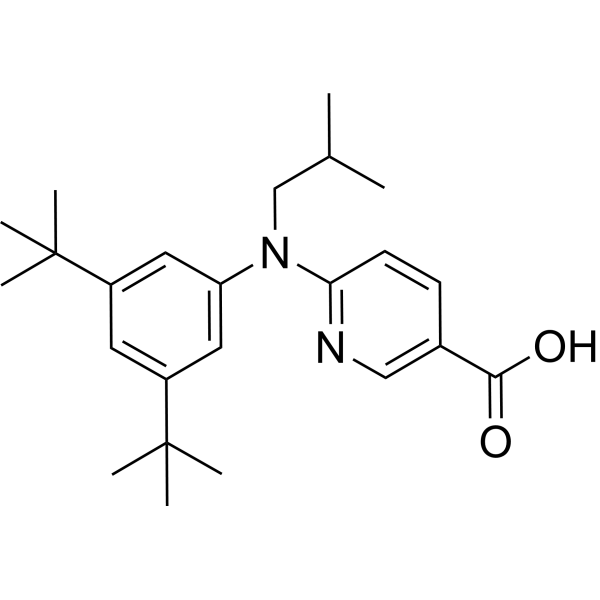
-
- HY-100608
-
BMS453
1 Publications Verification
BMS-189453
|
|
|
|
BMS453 (BMS-189453), a synthetic retinoid, is a RARβ agonist and a RARα/RARγ antagonist. BMS453 inhibits breast cell growth predominantly through the induction of active TGFβ .
|
-

-
- HY-101108S
-
|
AGN 190299-d6
|
Isotope-Labeled Compounds
Drug Metabolite
|
Others
|
|
Tazarotenic acid-d6 is deuterium labeled Tazarotenic acid. Tazarotenic acid is the metabolite of Tazarotene. Tazarotenic acid binding to retinoic acid receptors (RARs) is the probable molecular target of retinoid action. Tazarotenic acid has the potential for the research of warty dyskeratoma .
|
-
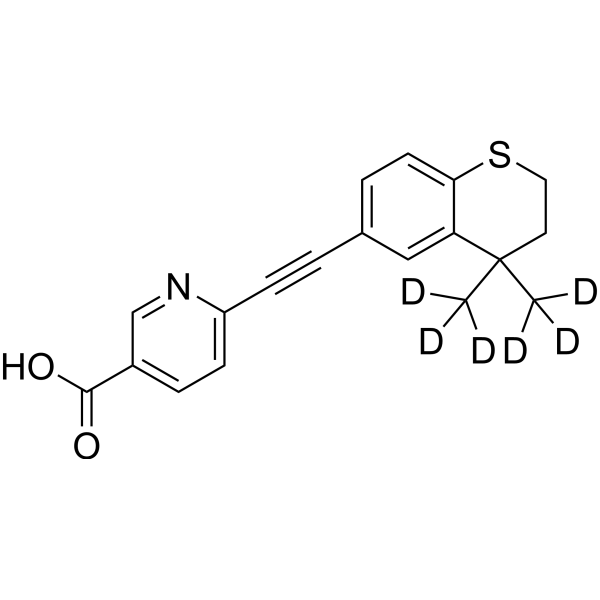
-
- HY-144377
-
|
|
RAR/RXR
|
Neurological Disease
Metabolic Disease
Cancer
|
|
RXR antagonist 1 (compound 6a) is a retinoid X receptor (RXR) modulator. RXR antagonist 1 shows potent RXR-antagonistic activity, with a pA2 of 8.06. RXR antagonist 1 can be used for type 2 diabetes research .
|
-
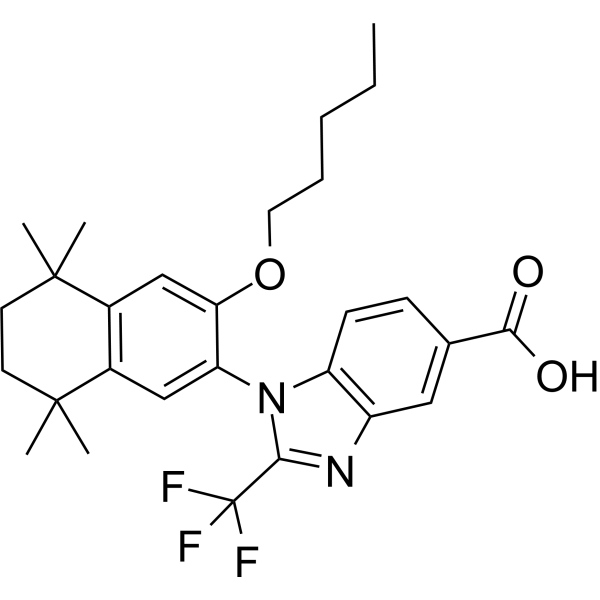
-
- HY-U00449S
-
|
|
Isotope-Labeled Compounds
RAR/RXR
Autophagy
|
Cancer
|
|
AGN 193109-d7 is the deuterium labeled AGN 193109. AGN 193109 is a retinoid analog, and acts as a specific and highly effective antagonist of retinoic acid receptors (RARs), with Kds of 2 nM, 2 nM, and 3 nM for RARα, RARβ, and RARγ, respectively.
|
-

-
- HY-107413
-
|
BMS-649
|
RAR/RXR
|
Cancer
|
|
SR11237 (BMS-649) is a potent retinoid X receptor (RXR)-selective agonist that is devoid of any RAR activity. SR11237 can cause RXR/RXR homodimers to form and transactivate a reporter gene containing a RXR-response element .
|
-
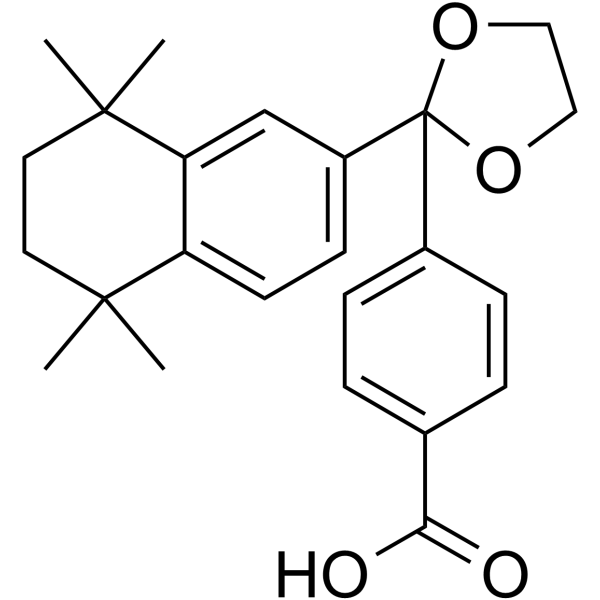
-
- HY-B0107R
-
|
Ro 10-1670 (Standard)
|
RAR/RXR
Autophagy
Apoptosis
|
Inflammation/Immunology
Cancer
|
|
Acitretin (Standard) is the analytical standard of Acitretin. This product is intended for research and analytical applications. Acitretin (Ro 10-1670) is a second-generation, systemic retinoid that has been used in the treatment of psoriasis. Acitretin also can be used for the research of Alzheimer’s disease .
|
-
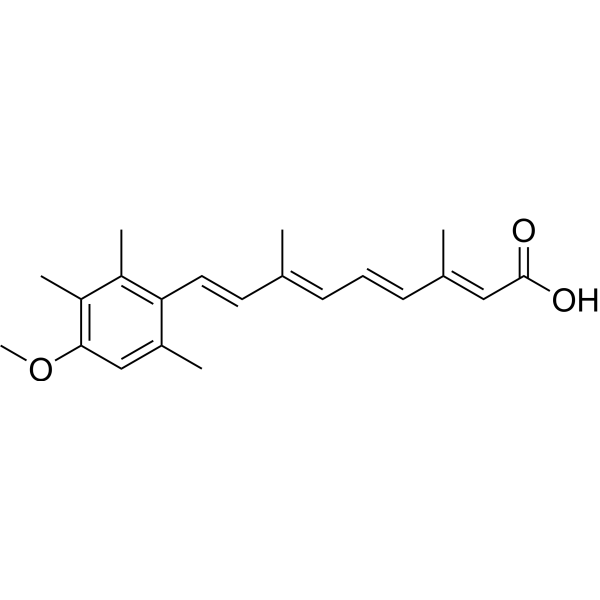
-
- HY-107436
-
LE135
1 Publications Verification
|
RAR/RXR
TRP Channel
|
Neurological Disease
Cancer
|
|
LE135 is a potent RAR antagonist that binds selectively to RARα (Ki of 1.4 μM) and RARβ (Ki of 220 nM), and has a higher affinity to RARβ. LE135 is highly selective over RARγ, RXRα, RXRβ and RXRγ. LE135 is also a potent TRPV1 and TRPA1 receptors activator with EC50s of 2.5 μM and 20 μM, respectively .
|
-

-
- HY-124136
-
|
|
RAR/RXR
Apoptosis
Autophagy
|
Cancer
|
|
WYC-209, a synthetic retinoid, is a retinoic acid receptor (RAR) agonist. WYC-209 induces apoptosis primarily via the caspase 3 pathway (IC50=0.19 μM for inmalignant murine melanoma TRCs), and has long-term effects with little toxicity .
|
-
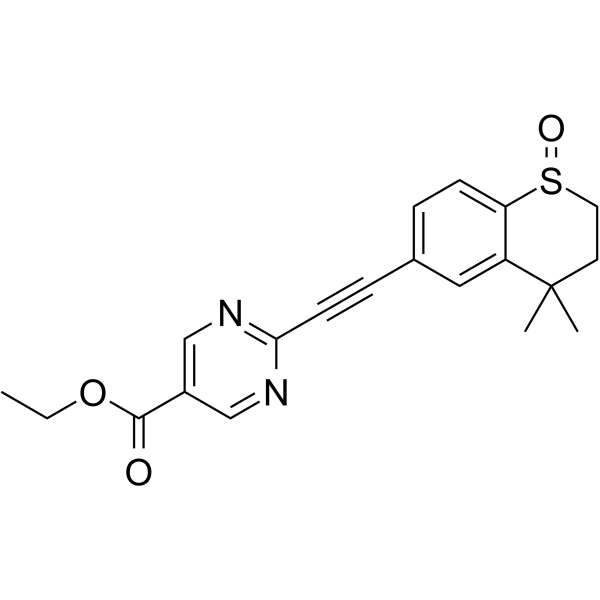
-
- HY-152851
-
|
IMU-935
|
ROR
|
Others
|
|
Izumerogant (IMU-935) is an inverse agonist of retinoid-related orphan receptor-gamma (RORγ). Izumerogant (compound 123) also potently inhibits IL-17A, IL-17F and IFN-γ activity with IC50s <50 nM .
|
-
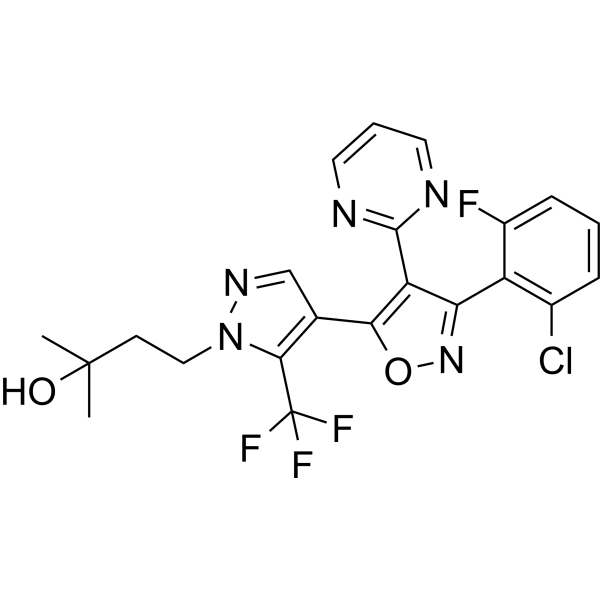
-
- HY-129240S
-
|
Isoacitretin d3; Ro 13-7652 d3
|
Drug Metabolite
|
Inflammation/Immunology
|
|
13-cis Acitretin-d3 is a deuterium labeled 13-cis Acitretin. 13-cis Acitretin is the metabolite of Acitretin after chronic administration. Acitretin(Ro 10-1670) is a second-generation, systemic retinoid that has been used in the treatment of psoriasis[1][2].
|
-
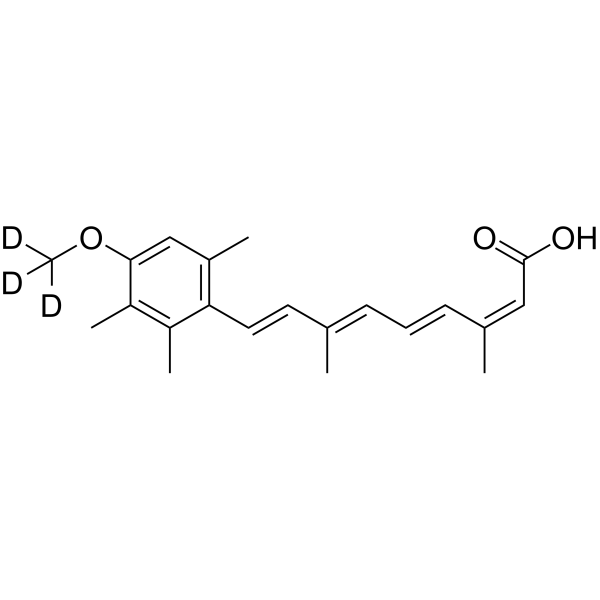
-
- HY-142936
-
|
|
ROR
|
Neurological Disease
Inflammation/Immunology
Cancer
|
|
RORγt modulator 3 (Compound 23) is a modulator of retinoid-related orphan receptor γt (RORγt). RORγt modulator 3 can be used for the research of RORyt mediated diseases such as, e.g., pain, inflammation, COPD, asthma, rheumatoid arthritis, colitis, multiple sclerosis, psoriasis, neurodegenerative diseases and cancer .
|
-
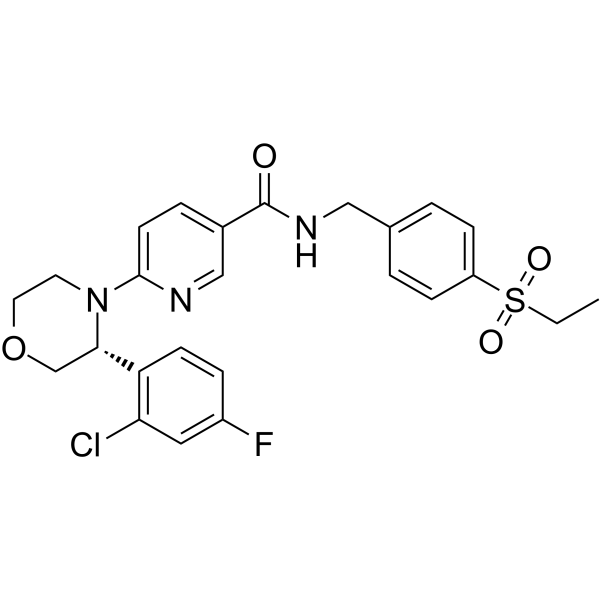
-
- HY-A0067
-
|
Benzophenone 3
|
RAR/RXR
Autophagy
Apoptosis
|
Neurological Disease
|
|
Oxybenzone (Benzophenone 3) is a commonly used UV filter in sun tans and skin protectants. Oxybenzone act as endocrine disrupting chemicals (EDCs) and can pass through the placental and blood-brain barriers. Benzophenone-3 impairs autophagy, alters epigenetic status, and disrupts retinoid X receptor signaling in apoptotic neuronal cells .
|
-

-
- HY-U00449
-
|
|
RAR/RXR
Autophagy
|
Cancer
|
|
AGN 193109 is a retinoid analog, and acts as a specific and highly effective antagonist of retinoic acid receptors (RARs), with Kds of 2 nM, 2 nM, and 3 nM for RARα, RARβ, and RARγ, respectively. AGN 193109 is a click chemistry reagent, it contains an Alkyne group and can undergo copper-catalyzed azide-alkyne cycloaddition (CuAAc) with molecules containing Azide groups.
|
-

-
- HY-142935
-
|
|
ROR
|
Neurological Disease
Inflammation/Immunology
Cancer
|
|
RORγt modulator 2 (Compound 21) is a modulator of retinoid-related orphan receptor γt (RORγt) with the IC50 of <50 nM. RORγt modulator 2 can be used for the research of RORyt mediated diseases such as, e.g., pain, inflammation, COPD, asthma, rheumatoid arthritis, colitis, multiple sclerosis, psoriasis, neurodegenerative diseases and cancer .
|
-

-
- HY-147366
-
|
|
Others
|
Metabolic Disease
|
|
RBP4 ligand-1 is a non-retinoid ligands for (RBP4) retinol-binding protein 4. The hRBP4SPA IC50 and RBP4–TTR FRET IC50 values are 0.23±0.11 and 0.13±0.12 μM in the radioligand binding assay and FRET assay, respectively .
|
-

-
- HY-14653
-
|
TAC-101; Am 555S
|
RAR/RXR
Apoptosis
|
Cancer
|
|
Amsilarotene (TAC-101; Am 555S), an orally active synthetic retinoid, has selective affinity for retinoic acid receptor α (RAR-α) binding with Ki of 2.4, 400 nM for RAR-α and RAR-β. Amsilarotene induces the apoptotic of human gastric cancer, hepatocellular carcinoma and ovarian carcinoma cells. Amsilarotene can be used for the research of cancer .
|
-
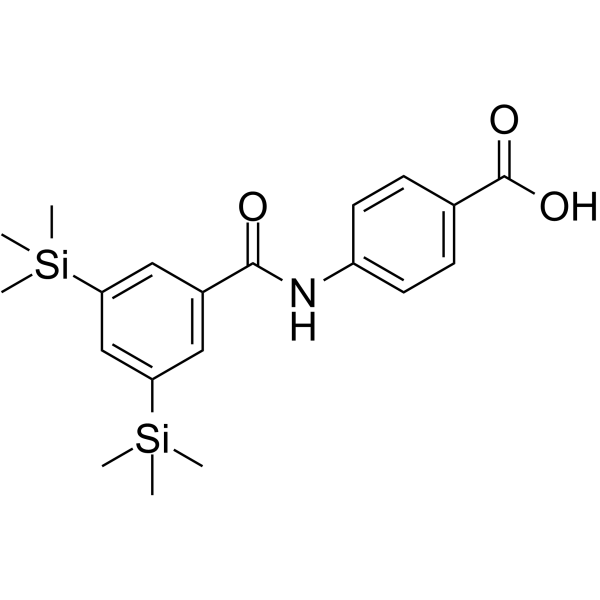
-
- HY-14171
-
Bexarotene
Maximum Cited Publications
16 Publications Verification
LGD1069
|
RAR/RXR
Autophagy
|
Cancer
|
|
Bexarotene (LGD1069) is a high-affinity and selective retinoid X receptors (RXR) agonist with EC50s of 33, 24, 25 nM for RXRα, RXRβ, and RXRγ, respectively. Bexarotene shows limited affinity for RAR receptors (EC50 >10000 nM) . Bexarotene can be used for the research of cutaneous T-cell lymphoma.
|
-
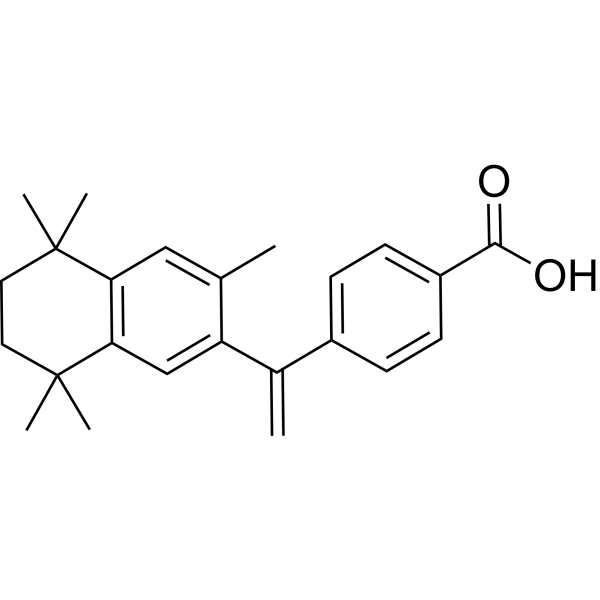
-
- HY-N0155
-
Nobiletin
Maximum Cited Publications
16 Publications Verification
|
ROR
Reactive Oxygen Species
Apoptosis
Autophagy
|
Neurological Disease
Inflammation/Immunology
Cancer
|
|
Nobiletin is a poly-methoxylated flavone from the citrus peel that improves memory loss. Nobiletin is a retinoid acid receptor-related orphan receptors (RORs) agonist. Nobiletin can reduce reactive oxygen species (ROS) levels in differentiated C2C12 myotubes and has anti-inflammation and anti-cancer properties, including anti-angiogenesis, anti-proliferation, anti-metastasis and induced apoptosis .
|
-
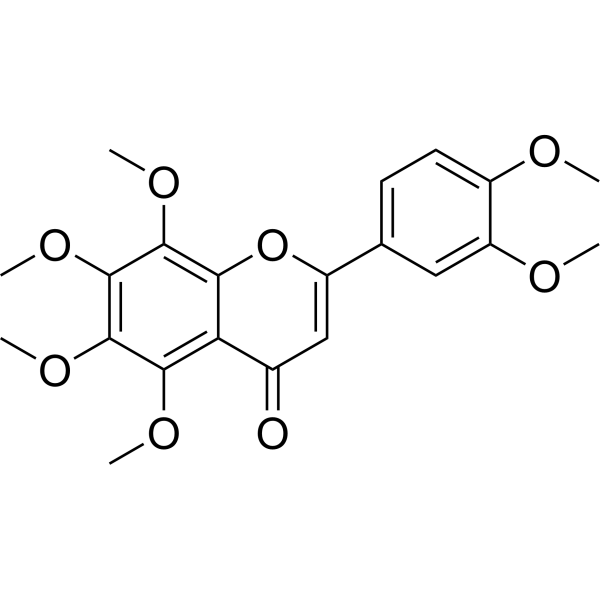
- HY-A0067S
-
|
|
RAR/RXR
Apoptosis
Autophagy
|
Neurological Disease
|
|
Oxybenzone-d5 is the deuterium labeled Oxybenzone[1]. Oxybenzone (Benzophenone 3) is a commonly used UV filter in sun tans and skin protectants. Oxybenzone act as endocrine disrupting chemicals (EDCs) and can pass through the placental and blood-brain barriers. Benzophenone-3 impairs autophagy, alters epigenetic status, and disrupts retinoid X receptor signaling in apoptotic neuronal cells[2][3][4].
|
-

- HY-B1640A
-
|
Etacrynic acid sodium; Sodium etacrynate
|
NF-κB
Glutathione S-transferase
Calcium Channel
NO Synthase
|
Inflammation/Immunology
Cancer
|
|
Ethacrynic acid (Etacrynic acid sodium) sodium is a diuretic. Ethacrynic acid sodium is an inhibitor of glutathione S-transferases (GSTs). Ethacrynic acid sodium is a potent inhibitor of NF-kB-signaling pathway, and also modulates leukotriene formation. Ethacrynic acid sodium also inhibits L-type voltage-dependent and store-operated calcium channel, leading to relaxation of airway smooth muscle (ASM) cells. Ethacrynic acid sodium has anti-inflammatory properties that reduces the retinoid-induced ear edema in mice .
|
-

- HY-A0067R
-
|
Benzophenone 3 (Standard)
|
RAR/RXR
Autophagy
Apoptosis
|
Neurological Disease
|
|
Oxybenzone (Standard) is the analytical standard of Oxybenzone. This product is intended for research and analytical applications. Oxybenzone (Benzophenone 3) is a commonly used UV filter in sun tans and skin protectants. Oxybenzone act as endocrine disrupting chemicals (EDCs) and can pass through the placental and blood-brain barriers. Benzophenone-3 impairs autophagy, alters epigenetic status, and disrupts retinoid X receptor signaling in apoptotic neuronal cells .
|
-

- HY-B0091S
-
|
|
RAR/RXR
Autophagy
Apoptosis
|
Neurological Disease
Inflammation/Immunology
Cancer
|
|
Adapalene-d3 is the deuterium labeled Adapalene. Adapalene (CD271), a third-generation synthetic retinoid, is widely used for the research of acne. Adapalene is a potent RAR agonist, with AC50s of 2.3 nM, 9.3 nM, and 22 nM for RARβ, RARγ, RARα, respectively. Adapalene also inhibits the enzymatic activity of GOT1 in a non-competitive manner. Adapalene exhibits anti-tumor activity[1][2][3].
|
-
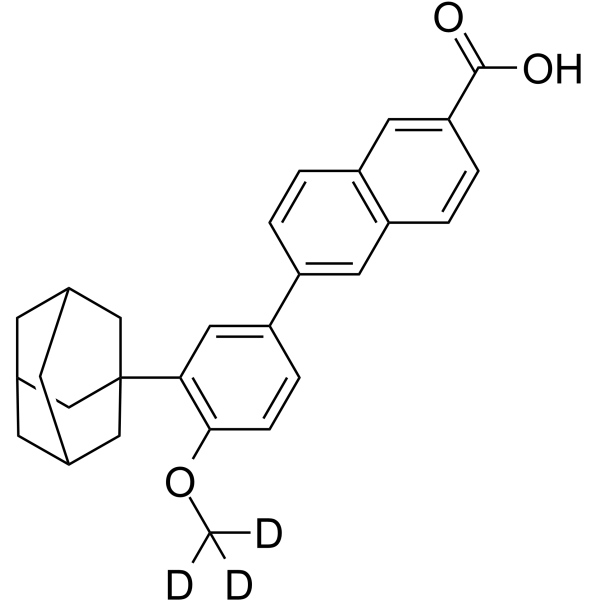
- HY-108538
-
|
|
Glutathione S-transferase
NF-κB
Calcium Channel
|
Inflammation/Immunology
|
|
Ethacrynic acid D5 is a deuterium labeled Ethacrynic acid. Ethacrynic acid is a diuretic. Ethacrynic acid is an inhibitor of glutathione S-transferases (GSTs). Ethacrynic acid is a potent inhibitor of NF-kB-signaling pathway, and also modulates leukotriene formation. Ethacrynic acid also inhibits L-type voltage-dependent and store-operated calcium channel, leading to relaxation of airway smooth muscle (ASM) cells. Ethacrynic acid has anti-inflammatory properties that reduces the retinoid-induced ear edema in mice .
|
-

- HY-B0091R
-
|
CD271 (Standard)
|
RAR/RXR
Autophagy
Apoptosis
|
Neurological Disease
Inflammation/Immunology
Cancer
|
|
Adapalene (Standard) is the analytical standard of Adapalene. This product is intended for research and analytical applications. Adapalene (CD271), a third-generation synthetic retinoid, is widely used for the research of acne. Adapalene is a potent RAR agonist, with AC50s of 2.3 nM, 9.3 nM, and 22 nM for RARβ, RARγ, RARα, respectively. Adapalene also inhibits the enzymatic activity of GOT1 in a non-competitive manner. Adapalene exhibits anti-tumor activity .
|
-
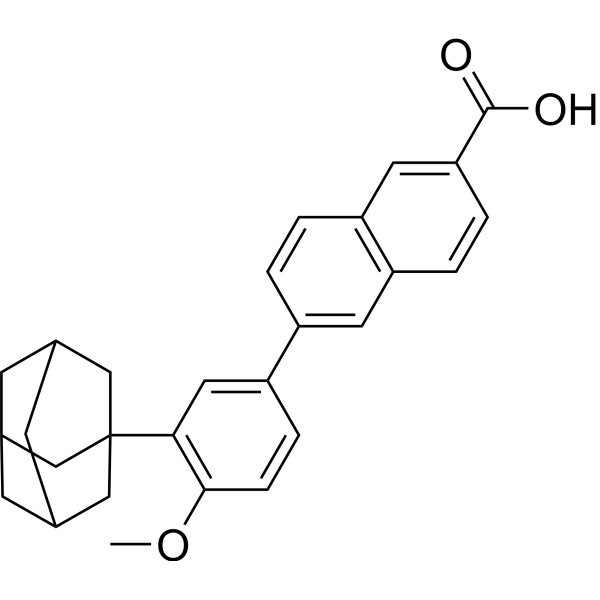
- HY-B1640R
-
|
Etacrynic acid (Standard)
|
Glutathione S-transferase
NF-κB
Calcium Channel
|
Inflammation/Immunology
Cancer
|
|
Ethacrynic acid (Standard) is the analytical standard of Ethacrynic acid. This product is intended for research and analytical applications. Ethacrynic acid (Etacrynic acid) is a diuretic. Ethacrynic acid is an inhibitor of glutathione S-transferases (GSTs). Ethacrynic acid is a potent inhibitor of NF-kB-signaling pathway, and also modulates leukotriene formation. Ethacrynic acid also inhibits L-type voltage-dependent and store-operated calcium channel, leading to relaxation of airway smooth muscle (ASM) cells. Ethacrynic acid has anti-inflammatory properties that reduces the retinoid-induced ear edema in mice .
|
-

- HY-15340
-
|
LG268
|
RAR/RXR
Autophagy
|
Metabolic Disease
|
|
LG100268 (LG268) is a potent, selective and orally active retinoid X receptor (RXR) agonist with EC50 values of 4 nM, 3 nM, and 4 nM for RXR-α, RXR-β, and RXR-γ, respectively . LG100268 displays >1000-fold selectivity for RXR over RAR, the Ki values are 3.4 nM, 6.2 nM and 9.2 nM for RXR-α, RXR-β, and RXR-γ, respectively . LG100268 activates RXR homodimers to induce transcriptional activation. LG100268 can be used for the study of lung carcinogenesisy .
|
-
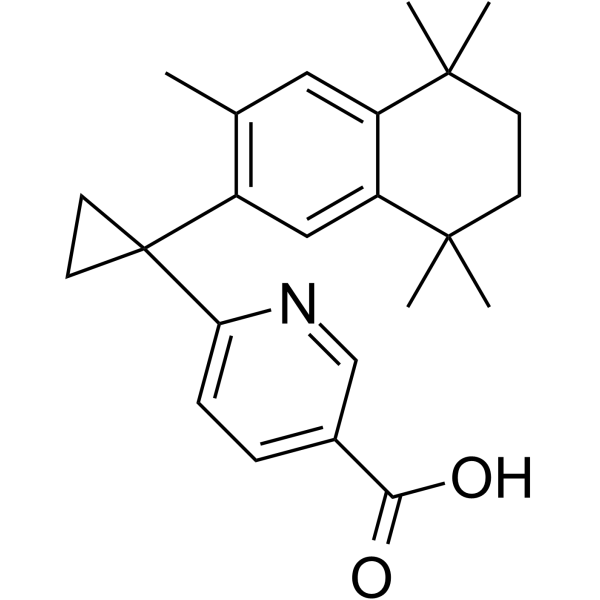
- HY-P0109A
-
|
(1S)-Z-FA-FMK
|
SARS-CoV
Cathepsin
Apoptosis
Caspase
|
Infection
Cancer
|
|
Z-FA-FMK ((1S)-Z-FA-FMK) is a potent Cathepsin B and L inhibitor. Z-FA-FMK blocks the induction of DEVDase activity, DNA fragmentation, and externalization of phosphatidylserine by selective synthetic retinoid-related molecules (RRMs). Z-FA-FMK inhibits apoptosis. Z-FA-FMK inhibits caspase activity and selectively inhibits recombinant effector caspases 2, -3, -6, and -7. Z-FA-FMK is a viral inhibitor. Z-FA-FMK inhibits reovirus replication in a susceptible host .
|
-
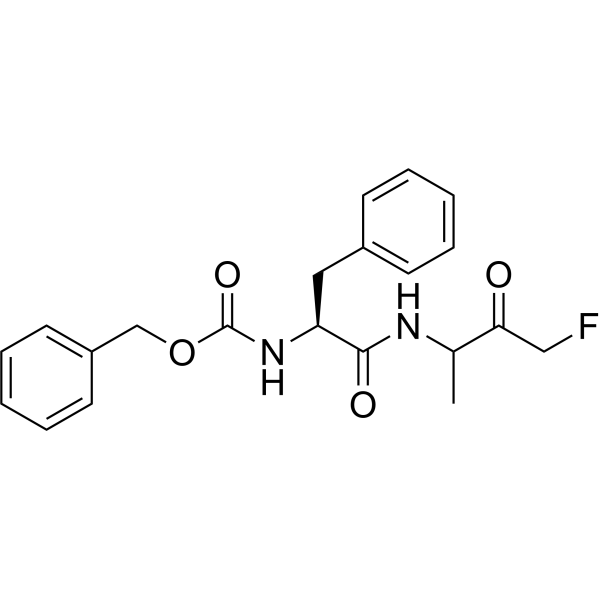
- HY-125904
-
|
|
RAR/RXR
|
Neurological Disease
Inflammation/Immunology
Cancer
|
|
4-Hydroxyretinoic acid (4-HRA) is a naturally occurring retinoid derivative with diverse biological effects. 4-Hydroxyretinoic acid is formed from retinol catalyzed by cytochrome P-450 isozyme(s), and is mainly metabolized by the liver in the body. 4-Hydroxyretinoic acid also serves as the substrate for human liver microsomal UDP-glucuronosyltransferase(s) and recombinant UGT2B7. 4-Hydroxyretinoic acid regulates gene expression and cell differentiation via binding to nuclear receptor RAR (Retinoic Acid Receptor), and activates RARs and RXR-alpha, to induce cancer cell apoptosis. In addition, 4-Hydroxyretinoic acid is also involved in various physiological processes such as immune regulation, neuroprotection, and anti-oxidation .
|
-

| Cat. No. |
Product Name |
Type |
-
- HY-D1190
-
|
|
Fluorescent Dyes/Probes
|
|
DC271 is a RAR agonist that can be considered a retinoid, eliciting cellular responses consistent with the endogenous retinoid ATRA and the synthetic retinoid EC23. DC271 binds to retinoid protein machinery, including CRABPII, to translocate the endogenous retinoid ATRA into the nucleus .
|
| Cat. No. |
Product Name |
Target |
Research Area |
-
- HY-P1861A
-
|
|
Peptides
|
Inflammation/Immunology
|
|
Interphotoreceptor Retinoid Binding Protein Fragment (IRBP) TFA, a 20-residue peptide and a major pathogenic epitope, is present in the first homologous repeat of the interphotoreceptor retinoid binding protein peptide (IRBP 161–180), which can induce posterior uveitis (EAU) .
|
-
- HY-P1924
-
|
IRBP(668-687)
|
Peptides
|
Inflammation/Immunology
|
|
Interphotoreceptor retinoid-binding protein(668-687), the amino acid residues 668 to 687 of human interphotoreceptor retinoid binding protein (IRBP), induces uveitis .
|
-
- HY-P1924A
-
|
IRBP(668-687) TFA
|
Peptides
|
Inflammation/Immunology
|
|
Interphotoreceptor retinoid-binding protein(668-687) TFA, the amino acid residues 668 to 687 of human interphotoreceptor retinoid binding protein (IRBP), induces uveitis .
|
-
- HY-P1861
-
|
|
Peptides
|
Inflammation/Immunology
|
|
Interphotoreceptor Retinoid Binding Protein Fragment (IRBP), a 20-residue peptide and a major pathogenic epitope, is present in the first homologous repeat of the interphotoreceptor retinoid binding protein peptide (IRBP 161–180), which can induce posterior uveitis (EAU) .
|
-
- HY-P5397
-
|
|
Peptides
|
Others
|
|
IRBP derived peptide, R16 is a biological active peptide. (R16 is an IRBP (Interphotoreceptor retinoid binding protein) derived peptide. Photoreceptor cell protein is capable of inducing an experimental autoimmune uveitis (EAU) in susceptible animal strains.)
|
-
- HY-P5397A
-
|
|
Peptides
|
Others
|
|
IRBP derived peptide, R16 is a biological active peptide. (R16 is an IRBP (Interphotoreceptor retinoid binding protein) derived peptide. Photoreceptor cell protein is capable of inducing an experimental autoimmune uveitis (EAU) in susceptible animal strains.)
|
| Cat. No. |
Product Name |
Category |
Target |
Chemical Structure |
| Cat. No. |
Product Name |
Chemical Structure |
-
- HY-14171S
-
|
|
|
Bexarotene-d4 is a deuterium labeled Bexarotene (LGD1069). Bexarotene (LGD1069) is a selective retinoid X receptors (RXR) agonist for the treatment of cutaneous T-cell lymphoma[1][2][3][4][5].
|
-

-
- HY-B0797S
-
|
|
|
Etretinate-d3 is the deuterium labeled Etretinate. Etretinate (Ro 10-9359) is a second-generation retinoid that has the potential for severe psoriasis research.
|
-

-
- HY-101108S
-
|
|
|
Tazarotenic acid-d6 is deuterium labeled Tazarotenic acid. Tazarotenic acid is the metabolite of Tazarotene. Tazarotenic acid binding to retinoic acid receptors (RARs) is the probable molecular target of retinoid action. Tazarotenic acid has the potential for the research of warty dyskeratoma .
|
-

-
- HY-U00449S
-
|
|
|
AGN 193109-d7 is the deuterium labeled AGN 193109. AGN 193109 is a retinoid analog, and acts as a specific and highly effective antagonist of retinoic acid receptors (RARs), with Kds of 2 nM, 2 nM, and 3 nM for RARα, RARβ, and RARγ, respectively.
|
-

-
- HY-129240S
-
|
|
|
13-cis Acitretin-d3 is a deuterium labeled 13-cis Acitretin. 13-cis Acitretin is the metabolite of Acitretin after chronic administration. Acitretin(Ro 10-1670) is a second-generation, systemic retinoid that has been used in the treatment of psoriasis[1][2].
|
-

-
- HY-A0067S
-
|
|
|
Oxybenzone-d5 is the deuterium labeled Oxybenzone[1]. Oxybenzone (Benzophenone 3) is a commonly used UV filter in sun tans and skin protectants. Oxybenzone act as endocrine disrupting chemicals (EDCs) and can pass through the placental and blood-brain barriers. Benzophenone-3 impairs autophagy, alters epigenetic status, and disrupts retinoid X receptor signaling in apoptotic neuronal cells[2][3][4].
|
-

-
- HY-B0091S
-
|
|
|
Adapalene-d3 is the deuterium labeled Adapalene. Adapalene (CD271), a third-generation synthetic retinoid, is widely used for the research of acne. Adapalene is a potent RAR agonist, with AC50s of 2.3 nM, 9.3 nM, and 22 nM for RARβ, RARγ, RARα, respectively. Adapalene also inhibits the enzymatic activity of GOT1 in a non-competitive manner. Adapalene exhibits anti-tumor activity[1][2][3].
|
-

Your information is safe with us. * Required Fields.
Inquiry Information
- Product Name:
- Cat. No.:
- Quantity:
- MCE Japan Authorized Agent:




































































